By Sheryl Hamlin
At the October 16, 2019 Santa Paula City Council meeting, Public Works Director Clete Saunier presented the quarterly report for July-September of 2019, which is the first quarter of Fiscal Year 2019-2020. There were nine slides, four of which are shown here. The details of the staff presentation were included in the public agenda.
Streets Division
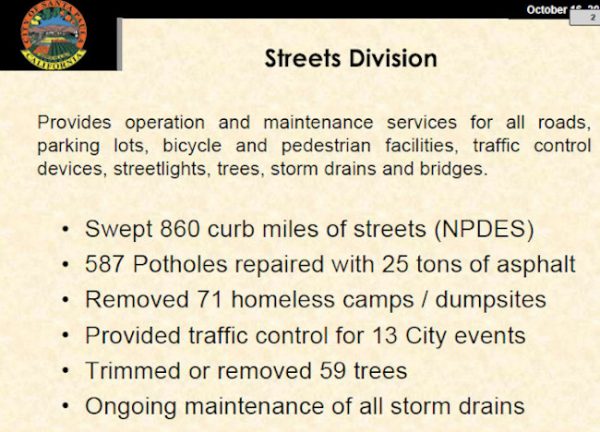

Fourteen streets on the western side of the city were repaved in the Fiscal Year 2018-2019. For FY 2019-2020, there are 17 streets in the northern side of the city. The cost of this work will be about $1 million. Funding will come from SB-1, Gas Tax, Measure T, Sewer and Water Enterprise Funds. The project is in design stage now. Council approved the award to Toro in April 2019.
Two other projects, the Sidewalk Improvement Program and the Harvard Boulevard Grant, are both in the conceptual stages. The crosstown pipeline and the Mesa Tank are in conceptual stages and will involve street work.
Note the involvement with the homeless camps/dumpsites: Removed 71 Homeless camps. No one on council inquired or asked for elaboration of this work.
Sewer Division
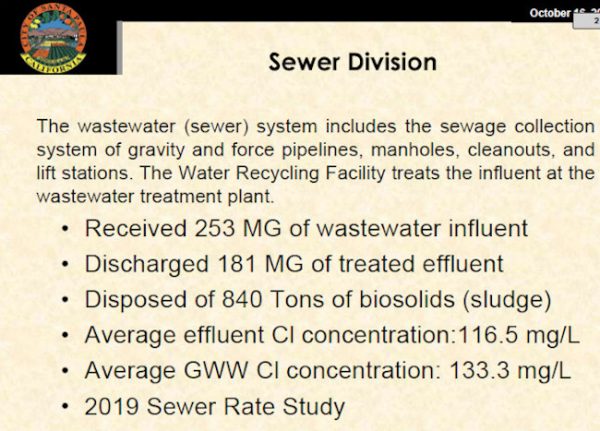

The staff plans $875,000 of upgrades over the next five years. Saying all is working well now, Veolia, the plant operator has hired a new Chief Plant Operator, Dave Commons, who has 38+ years experience in the field.
The following chart was provided about the waste water flow. There is an obvious omission which was not included in the staff report.
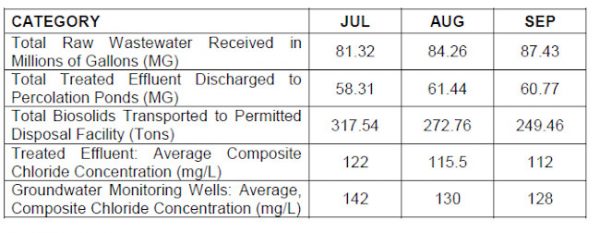

In July 81.32 MG (mega gallons) of raw sewage was treated at the plant. 58.31 MG was discharged to the percolation pond. That leaves 23.01 MG unexplained. According to a press description of the plant, there is an aerobic digestor followed by a dewatering system, whose result is the sludge hauled away. The staff report for the July column shows 317.54 tons hauled away. But there is no reconciliation.
A simple calculation of 23,010,000 gallons divided by 8.34 pounds per gallon yields 2,758,992 pounds or 1379 tons. Was all of this processed by the digestion system? What percent is liquid and what percent is solids? Public Works has been asked for this information multiple times with no response.
The chlorides at the plant itself show decline; however in the surrounding wells the level is high. There is more detail in the report the City sent to the Water Board. Read that letter here. On page four of the above linked report, there is one well that shows an extreme situation which is located near CalPipe. This should be explained.
Water Division
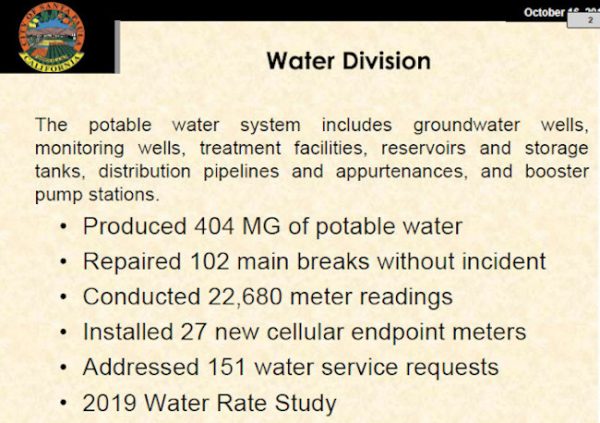

What should be noted is the high number of water main breaks. In an aging infrastructure, this is a constant. The staff is recommending a cutover to 100% remote reading of the water meters which will save time and be more accurate.
Capital Improvement Projects (CIP)
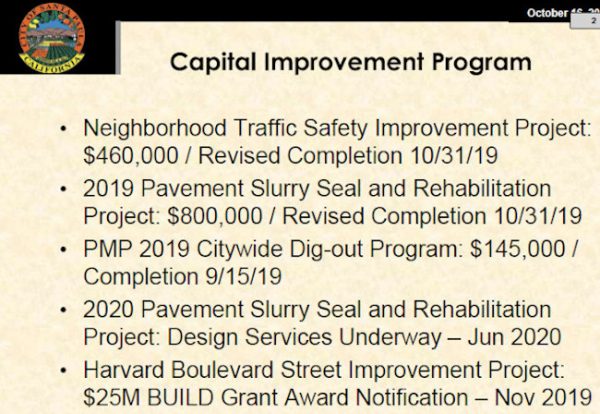

The CIP has been mentioned throughout the report; however, the big item to watch is the award of the Harvard Grant. This $25 million grant will allow the city to redesign/rebuilt Harvard. The city has hired a lobbyist to encourage legislators to vote for Santa Paula. A previous report on that grant was here.
Fleet Division
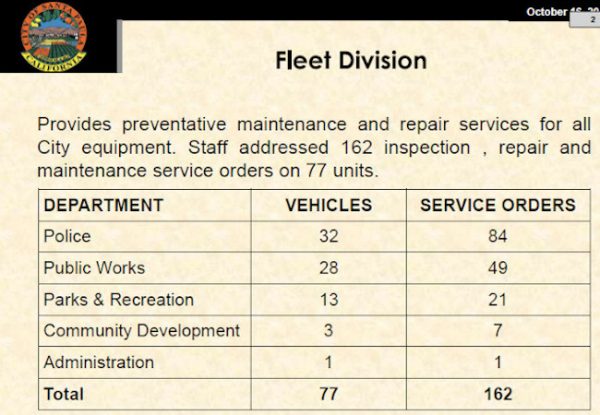

The Fleet Division keeps everything that moves moving. The SPPD fleet takes the most abuse, so shows the most repairs. The Director did not indicate the size of the staff needed for this division.
To watch the entire presentation and/or download the staff report, click here.
For more information about the author: sheryl hamlin dot com
Get Citizensjournal.us Headlines free SUBSCRIPTION. Keep us publishing – DONATE




Two other citizens and I had an excellent meeting with the new plant manager yesterday for an hour followed by a tour given by a Level 3 senior staff. The plant has issues but Mr. Commons with his Level 5 certification and 38 years experience brings the knowledge to make sound decisions.
As to a policy, it is a publicly funded enterprise and thus its systems, facilities, and records should fall under the California Public Records Act § 6250 et seq.. One would expect that stating in a letter “I am requesting an opportunity to inspect”….would be an adequate initiation. What is the reason for the apparent reticence?
A couple of years ago, as part of an interested group from Montecito I toured the entire plant, the tour had been arranged for interested community members. Thus, there is some kind of guidance or policy.
There should be no particular reason for refusing to allow a tour of this plant. Many cities gladly give tours of there wastewater treatment plants.
The article quoted says the SP plant uses an aerobic digestion process which is different from an anaerobic digestor. Here is a comparison of the process… there are pros and cons of both…
https://en.wikipedia.org/wiki/Comparison_of_anaerobic_and_aerobic_digestion
Reporter has requested tour of plant. Was told there is no policy on public tours.